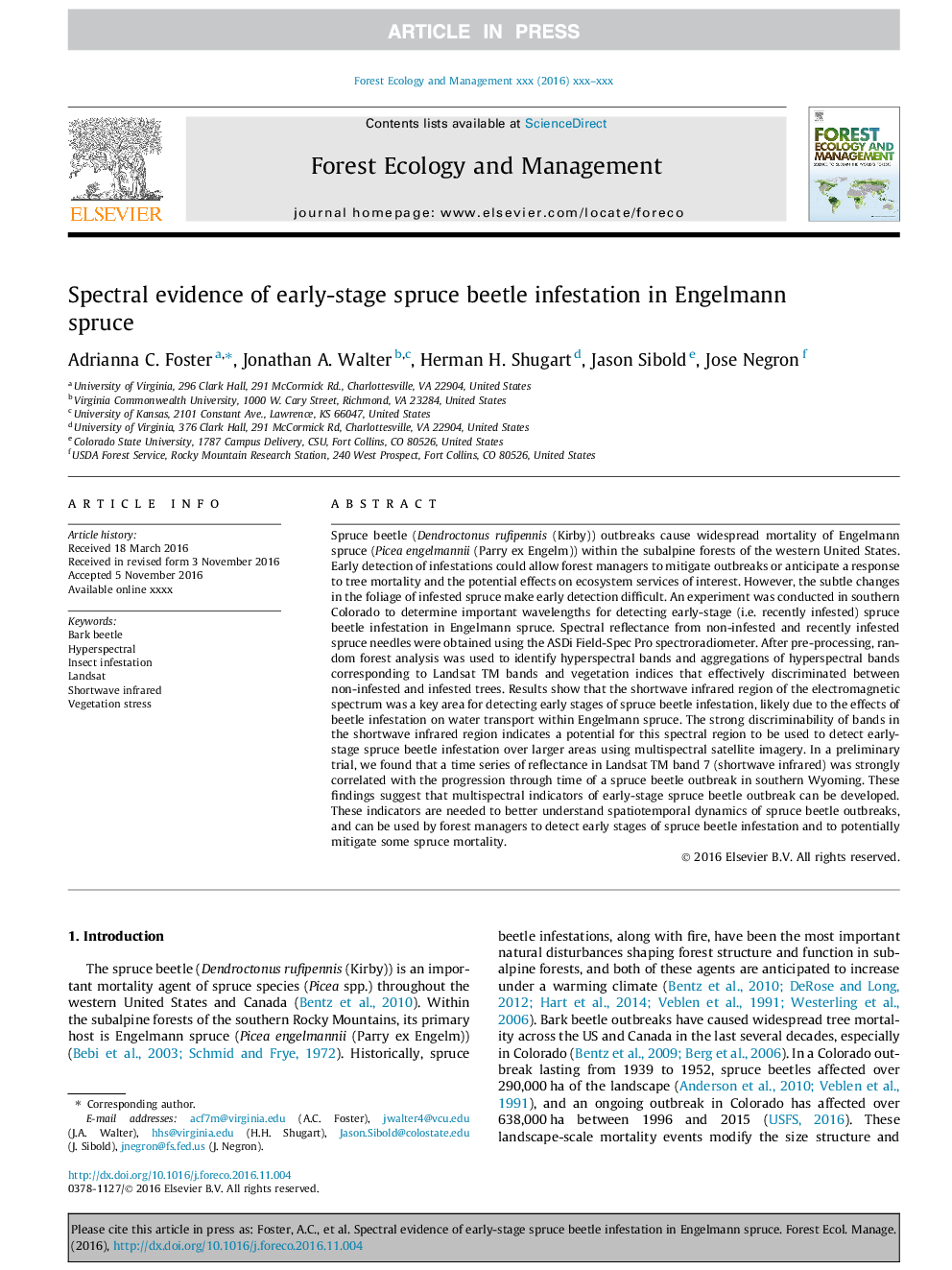| Article ID | Journal | Published Year | Pages | File Type |
|---|---|---|---|---|
| 4759637 | Forest Ecology and Management | 2017 | 11 Pages |
Abstract
Spruce beetle (Dendroctonus rufipennis (Kirby)) outbreaks cause widespread mortality of Engelmann spruce (Picea engelmannii (Parry ex Engelm)) within the subalpine forests of the western United States. Early detection of infestations could allow forest managers to mitigate outbreaks or anticipate a response to tree mortality and the potential effects on ecosystem services of interest. However, the subtle changes in the foliage of infested spruce make early detection difficult. An experiment was conducted in southern Colorado to determine important wavelengths for detecting early-stage (i.e. recently infested) spruce beetle infestation in Engelmann spruce. Spectral reflectance from non-infested and recently infested spruce needles were obtained using the ASDi Field-Spec Pro spectroradiometer. After pre-processing, random forest analysis was used to identify hyperspectral bands and aggregations of hyperspectral bands corresponding to Landsat TM bands and vegetation indices that effectively discriminated between non-infested and infested trees. Results show that the shortwave infrared region of the electromagnetic spectrum was a key area for detecting early stages of spruce beetle infestation, likely due to the effects of beetle infestation on water transport within Engelmann spruce. The strong discriminability of bands in the shortwave infrared region indicates a potential for this spectral region to be used to detect early-stage spruce beetle infestation over larger areas using multispectral satellite imagery. In a preliminary trial, we found that a time series of reflectance in Landsat TM band 7 (shortwave infrared) was strongly correlated with the progression through time of a spruce beetle outbreak in southern Wyoming. These findings suggest that multispectral indicators of early-stage spruce beetle outbreak can be developed. These indicators are needed to better understand spatiotemporal dynamics of spruce beetle outbreaks, and can be used by forest managers to detect early stages of spruce beetle infestation and to potentially mitigate some spruce mortality.
Related Topics
Life Sciences
Agricultural and Biological Sciences
Ecology, Evolution, Behavior and Systematics
Authors
Adrianna C. Foster, Jonathan A. Walter, Herman H. Shugart, Jason Sibold, Jose Negron,
